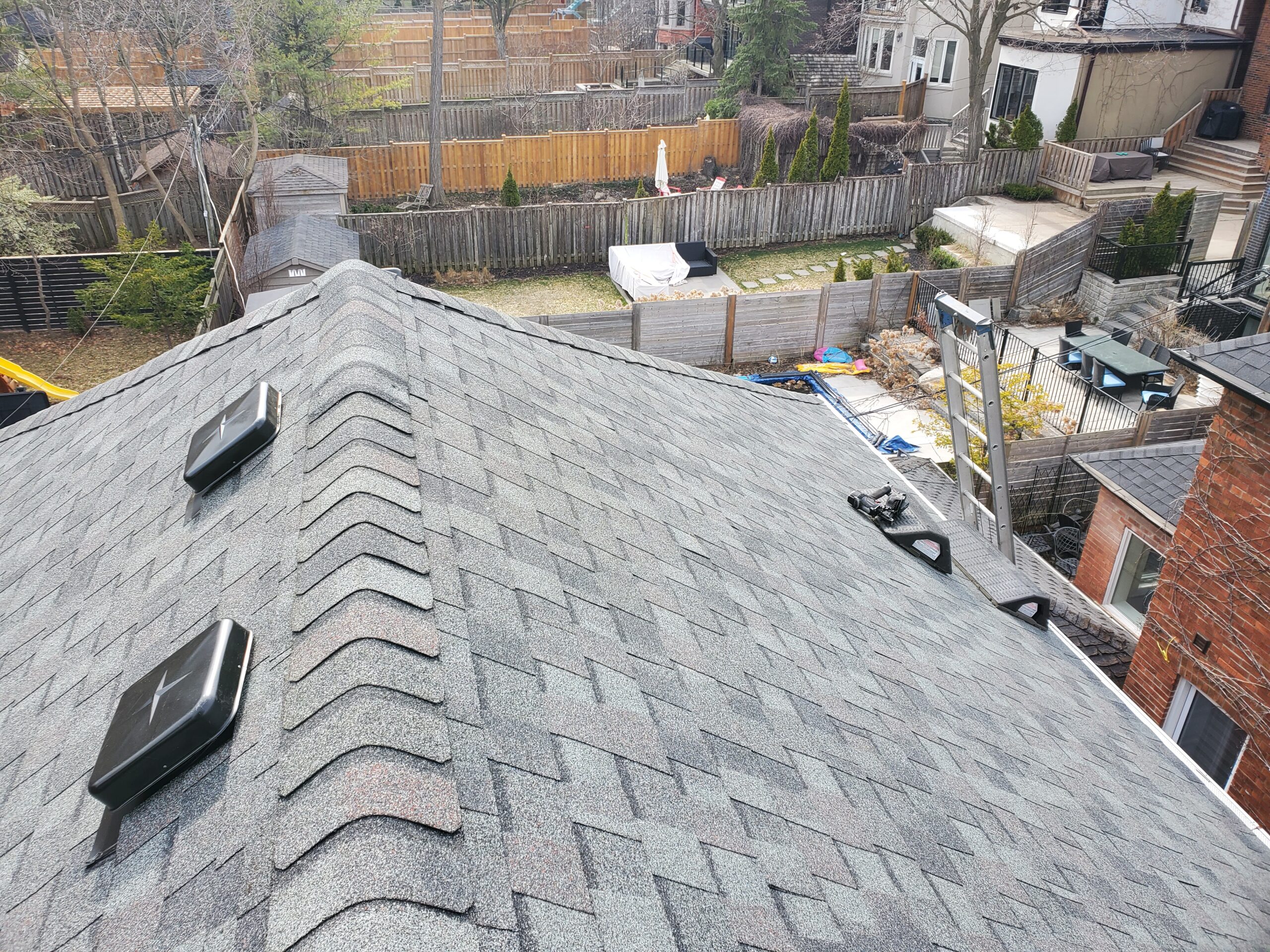Roof Inspection in Toronto
Full Roof Inspection Toronto report with photos, leak tracing, and clear next steps. WSIB‑insured crews.
Roof Inspection Toronto — When to Book
Active Leak or Stains
Ceiling spots or water in the attic need fast tracing—chimneys, valleys, skylights and vents are common sources.
Buying or Selling
Photos with a clear report help you budget, negotiate fairly, and plan repairs or replacement.
Annual Checkup
Catch loose flashings, exposed nails, failed sealant and clogged outlets before weather makes them costly.
Roof Inspection Toronto — What We Check & What You Get
Full Condition Review
- Shingles/membranes, edges & penetrations
- Chimneys, skylights, vents & wall flashings
- Gutter outlets, downspouts & drainage
Attic & Ventilation
- Intake & exhaust balance
- Moisture/mould indicators
- Insulation coverage
Photo Report
Clear photos with a prioritized punch list and budget‑level pricing for any fixes.
Roof Inspection Toronto — Fast Turnaround
Most inspections are completed in a single visit with the photo report delivered the same day. If we find urgent items, we secure the area and schedule repairs fast.
Our Roof Inspection Process
- Call & Schedule. We lock a time and note your concerns (leaks, stains, age).
- On‑Site Review. Exterior walk‑around, roof surface & detail checks, attic where accessible.
- Photo Report. Findings with photos and a prioritized plan—repair, monitor, or replace.
- Quote (If Needed). Pricing for repairs or replacement with timelines and warranty.
Typical Timing
Most homes: inspection and photos in ~60–90 minutes. Report same‑day.
Complex roofs: larger or multi‑level homes may take longer for safe access and photos.
What Affects Price
- Roof size & accessibility
- Number of chimneys, skylights & details
- Attic access and ventilation review
Roof Inspection Toronto — Photo Example
Warranty, Safety & Insurance
Since 2005
Trusted by Toronto homeowners for two decades.
Workmanship Warranty
Repairs and replacements we perform after inspection carry our 10‑year workmanship warranty.
Roof Inspection Toronto — Common Issues We Find
Chimneys, Valleys & Skylights
Most leaks start at details. We look for step‑flashing gaps, worn counter‑flashings, missing kick‑outs, and dried sealants around skylights and wall junctions.
Ventilation & Ice‑Dam Symptoms
Attic moisture, frost on nails, and heat loss can drive winter ice dams. We note intake/exhaust imbalances and give options to correct them safely.
Age & Wear
Granule loss, curling shingle edges, exposed fasteners, soft decking, and flat‑roof blisters are documented with photos and repair vs. replace guidance.
Every Roof Inspection Toronto visit ends with a prioritized list: items to fix now, items to monitor, and budget planning for future work.
Roof Inspection Toronto — Pricing & Scheduling
We quote a simple inspection fee for most single‑family homes in Toronto. The fee covers on‑site review, safety setup, and a photo‑rich report. Larger or complex roofs and multi‑unit buildings are quoted individually after a quick call.
- Appointments available weekdays with limited same‑day slots.
- Weather‑aware scheduling; we can still inspect safely in light rain.
- If urgent issues are found, we secure the area and schedule repairs fast.
What’s Included
- Roof surface, details and attic check (where accessible)
- 10–20+ labelled photos with notes
- Priority list with recommended actions and timelines
- Estimate for repairs or replacement if requested
To book your Roof Inspection Toronto visit, call 416‑666‑0798. We confirm timing, access instructions, and any specific concerns so the technician arrives prepared.
During booking we confirm roof access, attic availability, and any history of leaks or previous repairs so the inspection is focused from the first minute. Your report highlights urgent items that require immediate attention, maintenance items that can be scheduled, and longer‑term replacement planning based on age and condition. We document shingle, flat, and low‑slope systems, showing details at chimneys, valleys, skylights, and wall flashings so you can see exactly what we saw. If you’re buying or selling, we can provide a clear summary letter to support insurance or real‑estate decisions. Toronto weather is hard on roofs; proactive inspections reduce surprises and lower lifetime costs.

